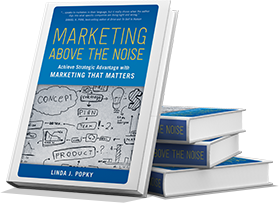This week I finally decided to dump my HP OfficeJet All-in-One printer. I know HP has a reputation for building good quality printers and I have an ancient LaserJet 4050 that I think will survive the next nuclear disaster, but the quality of this OfficeJet has been absolutely terrible.
Even worse, the quality of the service and support I’ve received from HP has been abysmal. I’ve spent hours talking to offshore support reps who spoke heavily accented English, couldn’t move beyond preset standard support scripts, and managed to lose all my account support information multiple times. Finally, in desperation I was escalated to an executive support group in the US right before Xmas, where a pleasant but curt native English-speaker told me I was out of line to expect quick delivery of my package because it was right before the holidays. (Never mind that my replacement order had been misplaced by HP for the previous three weeks.)
But I digress. For all these reasons plus the fact that the fourth OfficeJet I was sent from HP still isn’t working correctly, I decided it was time to dump the OfficeJet and move to something else–anything but HP.
I purchase a Brother color laser multifunction center. Since the machine itself is maybe 1.5 feet wide by 1.5 feet deep by almost 2 feet high, I was surprised when the clerk told me he doubted whether this would fit in my BMW. Aw cmon, I said. I’m sure it will fit. Then he wheeled out a huge box that was nearly 3′ cubed. And, yes, it did require an SUV to trek home.
Here’s what was so important about this big package:
- From the first impression onward, the package was impressive. Inside the box was another box. Inside that box was a third box, and inside that third box was my printer.
- When I got to the actual machine, there were foam, cardboard, and plastic inserts and other packaging material to keep the machine in good shape, even within the triple boxing.
- There were detailed instructions on how to unpack the printer, step by step, including where every piece of packaging material was and what order to remove it in.
- Even more importantly, the instructions were written in real English that I could understand.
- There were also detailed instructions on what to save and how to repack the printer if it ever needs to be sent back for repair.
- The only assembly I needed to do was to insert the toner cartridges (as opposed to the HP which had loose pieces that had to be put on the machine by the user).
This is in direct contrast to the HP unit, which was sent directly from HP in a flimsy cardboard box that more often than not would arrive torn or pushed in. Within the box, the printer was packed in a thin plastic bag and stuffed in between a styrofoam insert on either side. I say stuffed because it was impossible to get the machine out of the packing without the styrofoam disintegrating. HP sent me three replacement units and they all were sent the same way, so it looks like we have a pattern here.
The key lesson is that the first impression I have as a customer is what I see and encounter when I open the product. The impression I got from Brother is one of quality, concern for the customer and ease of use. The impression I got from HP, OTOH, is quick, dirty and inexpensive: we make our money on ink and that’s where we put our focus, not on printers. BTW, the cost for the Brother was not that much more than an HP machine w/comparable features.
Remember that old saw: You can’t judge a book by its cover? Well, sometime you can tell a lot about a product and its manufacturer by its packaging. Caveat emptor.




